The Galapagos: A world without humans
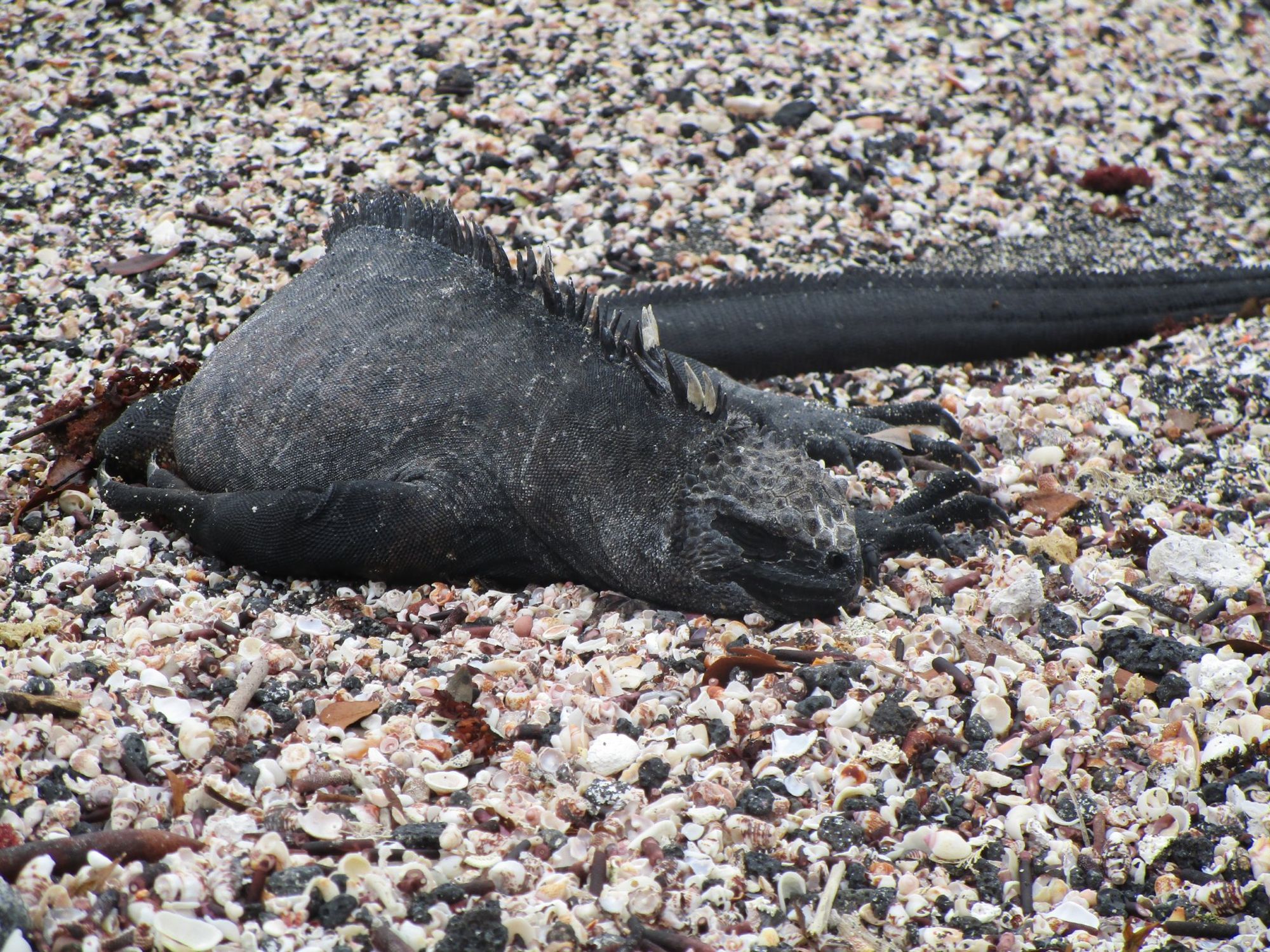
November was the most action-packed month of our trip to South America, with one unforgettable experience after another.
We journeyed deep into the Amazon rainforest; we hiked the Inca Trail to Machu Picchu; and, to top it all, we spent a week on board an amazing cruise around the Galapagos islands.
San Cristóbal
It was obvious from the moment we arrived in Puerto Baquerizo Moreno that we were somewhere very special. This little town sits on the southwest coast of San Cristóbal, one of just five inhabited islands in the archipelago, and serves as the capital of Ecuador's Galapagos province.
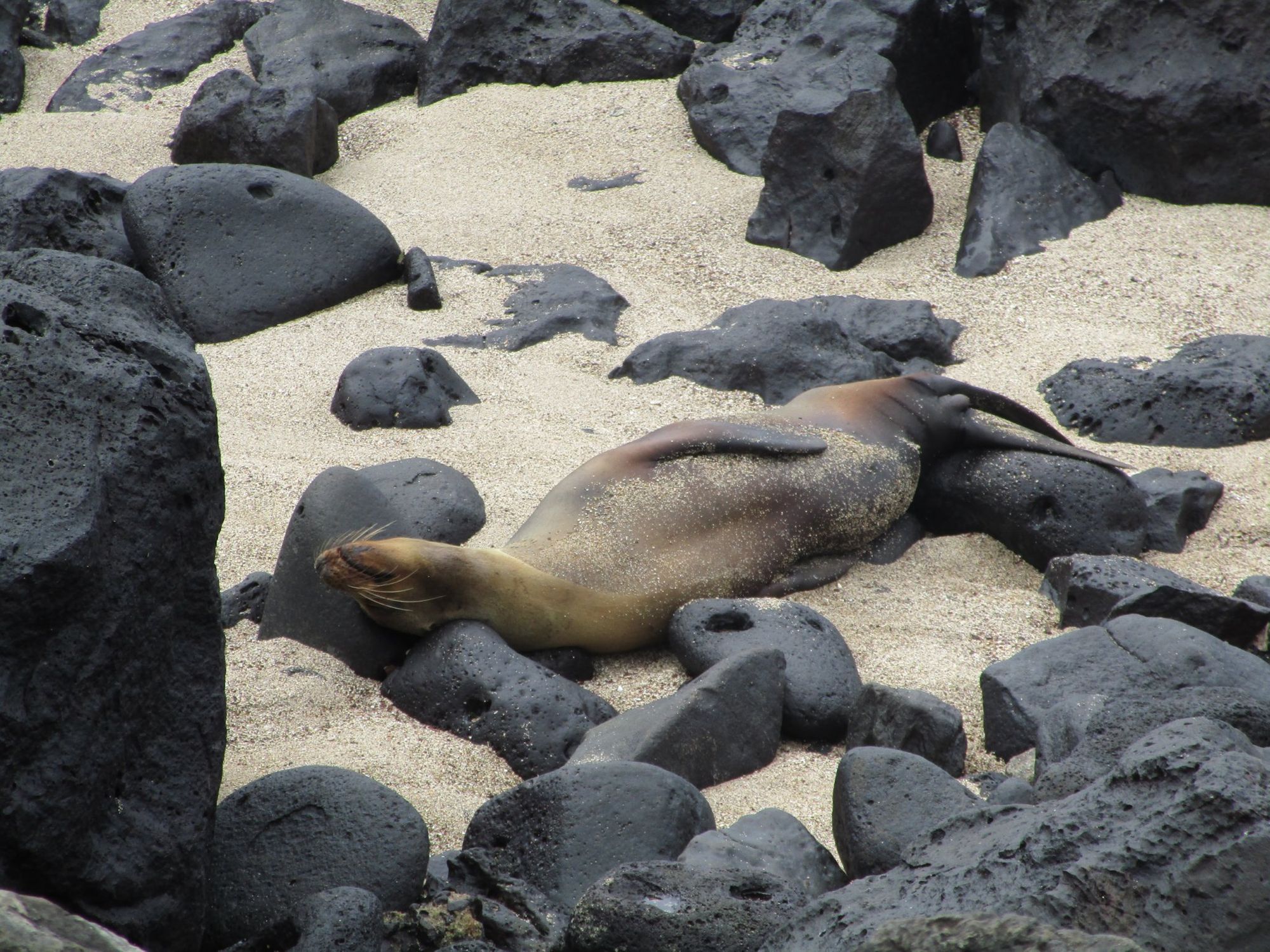
We were greeted by the sight of dozens of sea lions: some snoozing under boats moored on the beach, some playing in the shallows, and others hauling themselves up the beach towards us, barking their welcome. As we waited on the jetty for the little zodiac boat to take us to our ship, we saw bright red Sally Lightfoot crabs scuttling over the black volcanic rocks.
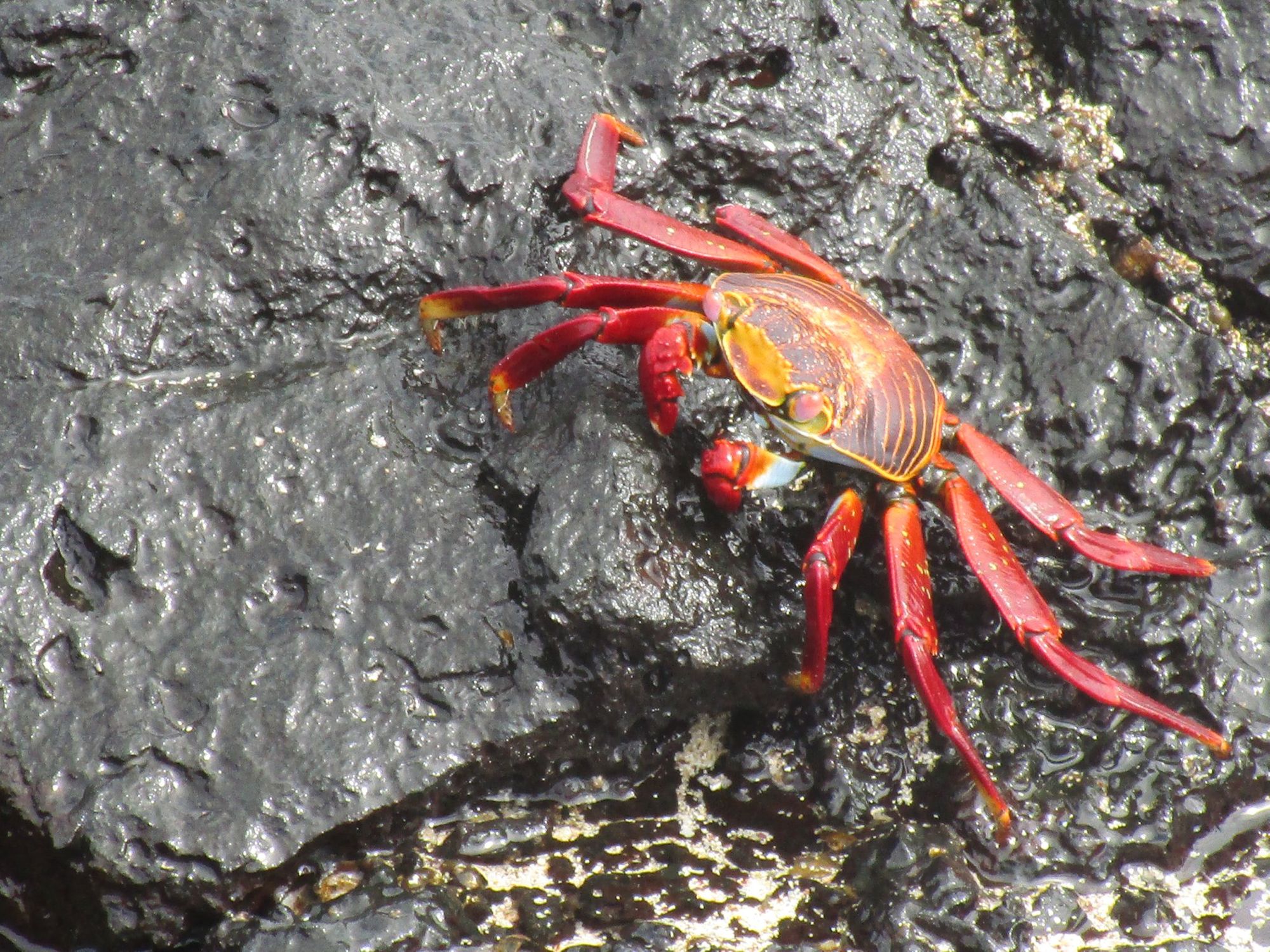
Bartolomé
We made our first landing early in the morning on day two, on tiny Bartolomé island. As you would expect, tourism in the Galapagos is strictly regulated, with landings limited to just a few sites on each island, and each ship's itinerary is determined by the National Park authorities.
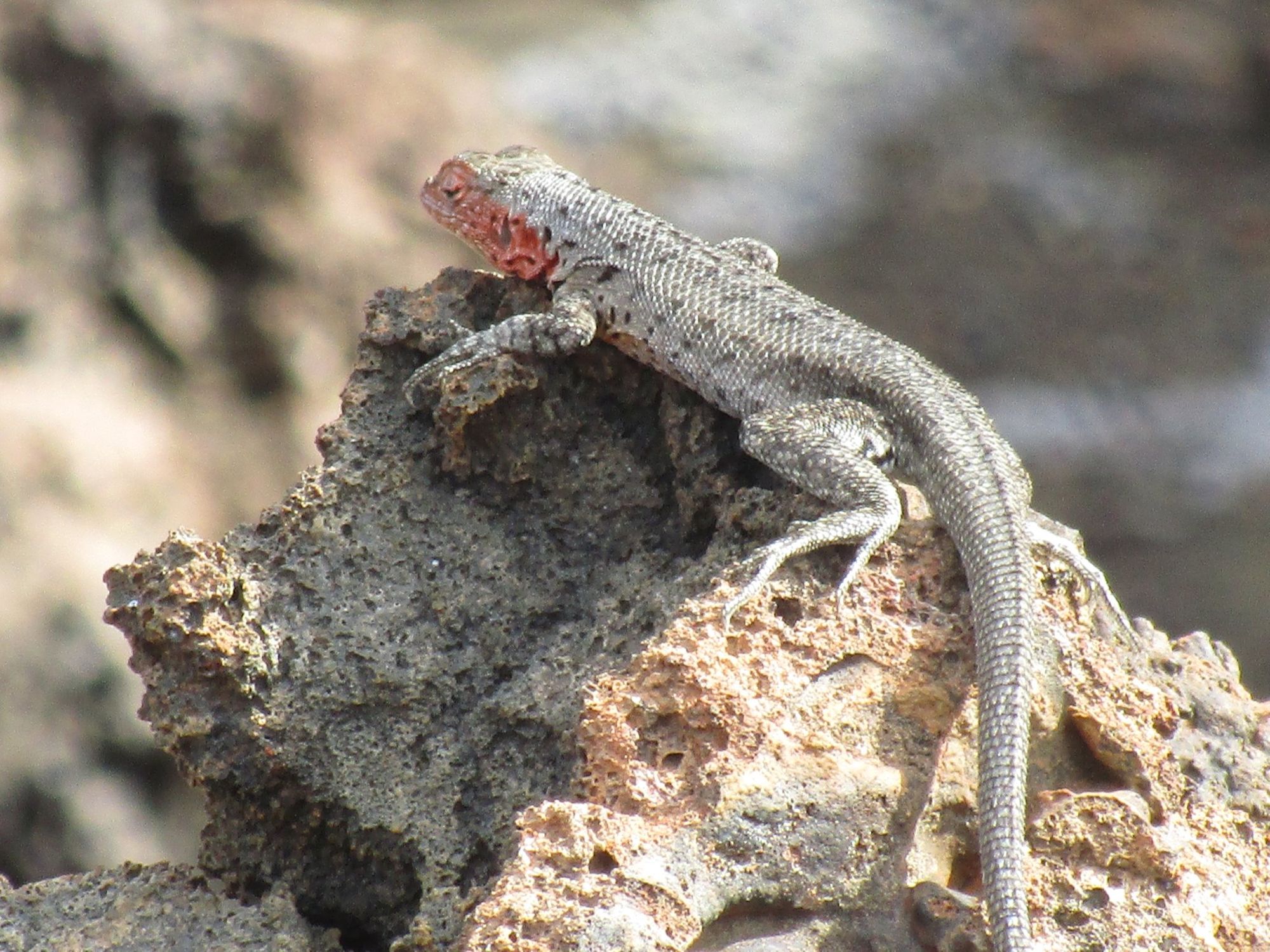
As we made our way to the top of Bartolomé the landscape seemed barren and lifeless, but on closer inspection we noticed several little lava lizards, warming themselves on the rocks. Frigate birds soared high overhead, and we caught the briefest glimpse of a Galapagos penguin diving into the water.
From the summit we had a great view of Pinnacle Rock, a distinctive formation created by the collapse of a type of volcano known as a tuff cone. Later that morning we made another landing on the beach next to Pinnacle Rock, and snorkelled in the shallows. Although the water was cold, the undersea world was more colourful than any I've seen in the tropics: we saw huge shoals of electric blue fish, bizarre-looking bumphead parrotfish, and plump black and yellow starfish.
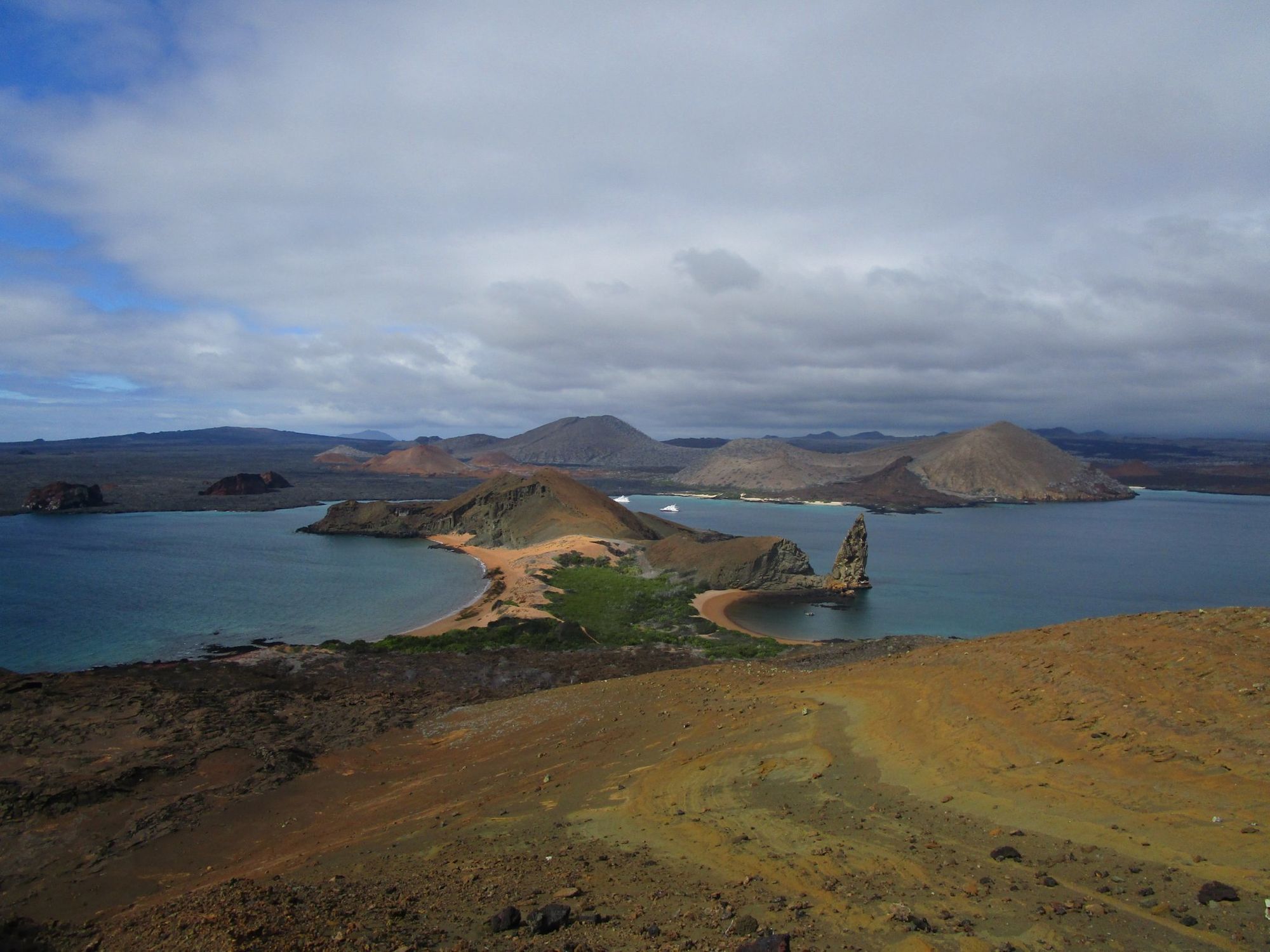
The Galapagos islands straddle the Equator, so you might expect to find a lush and green archipelago, but most of the islands are pretty dry, with sparse vegetation. A low carpet of grey cloud and mist known as garúa hangs over the islands for much of the year, threatening a deluge that rarely arrives.
This surprising climate is thanks to the location of the islands, at the meeting point of three different ocean currents: the warm Panama current, and the cold, nutrient-rich Cromwell and Humboldt currents. These colder currents have a cooling effect on the islands, which prevents the sort of tropical precipitation that you would expect at this latitude.
Isabela
We started the next day with a zodiac cruise around Punta Vicente Roca, on the northwest coast of Isabela island. We saw pelicans swooping down and scooping up fish, sea lions playing amongst the waves and sea turtles mating. As the zodiac neared a cave we spotted black marine iguanas draped over the cliffs, little fur seals perched on the rocks, and our first sighting of one of the archipelago's most iconic species, the blue-footed booby.
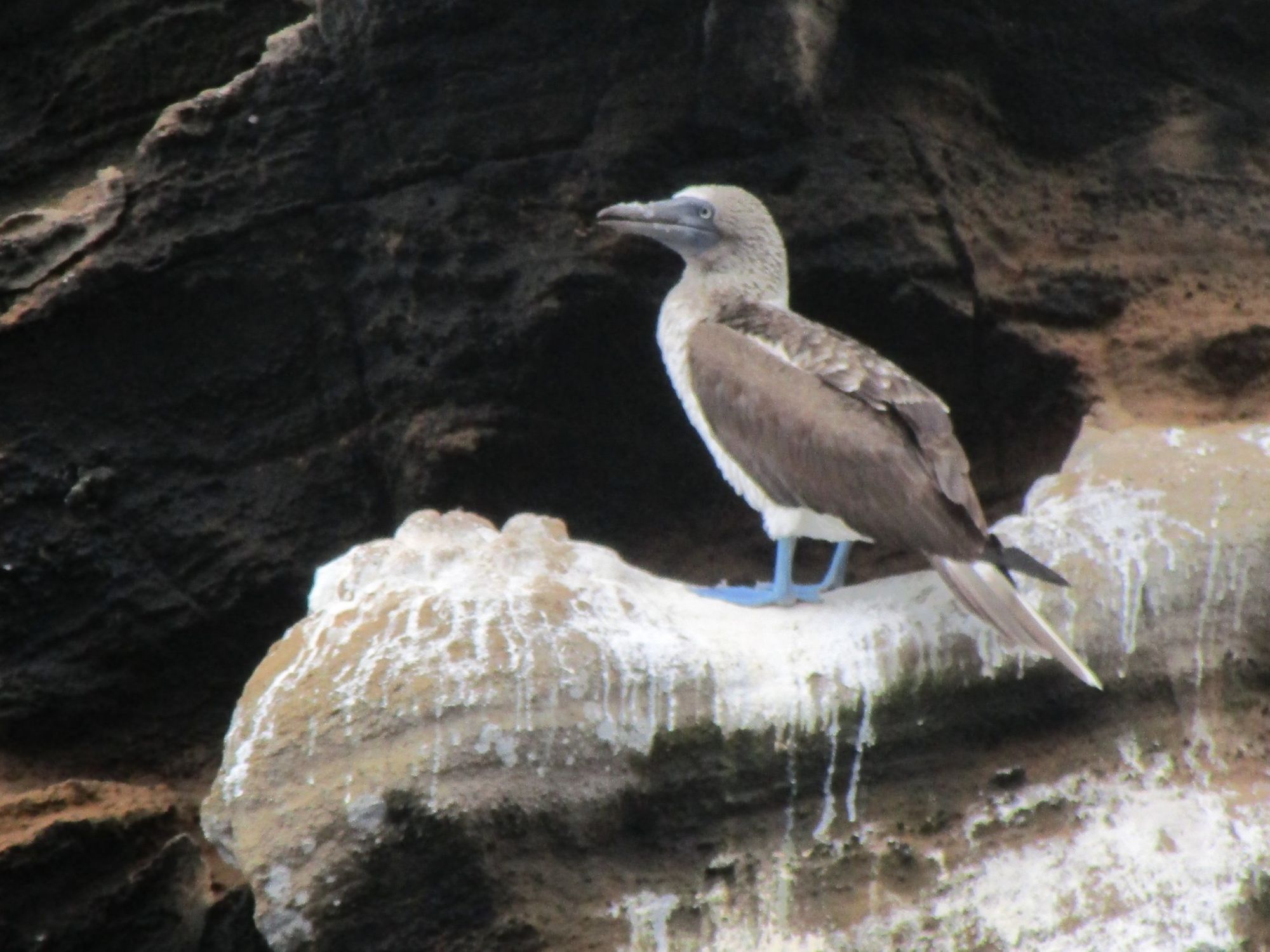
We returned to this spot a couple of hours later for a deep sea snorkelling session, where we jumped in straight from the boat. My biggest regret about our trip to the Galapagos is that I didn't buy a waterproof camera, as some of the most spectacular things we saw were under the water.
Straight away we spotted sea turtles swimming underneath us, incredibly close, and they were quickly joined by inquisitive sea lions. Then a couple of penguins, shooting through the water like torpedoes, and bizarre-looking flightless cormorants, with their stunted, useless wings. It was like swimming in an aquarium, one of the most memorable moments of our whole South America trip.
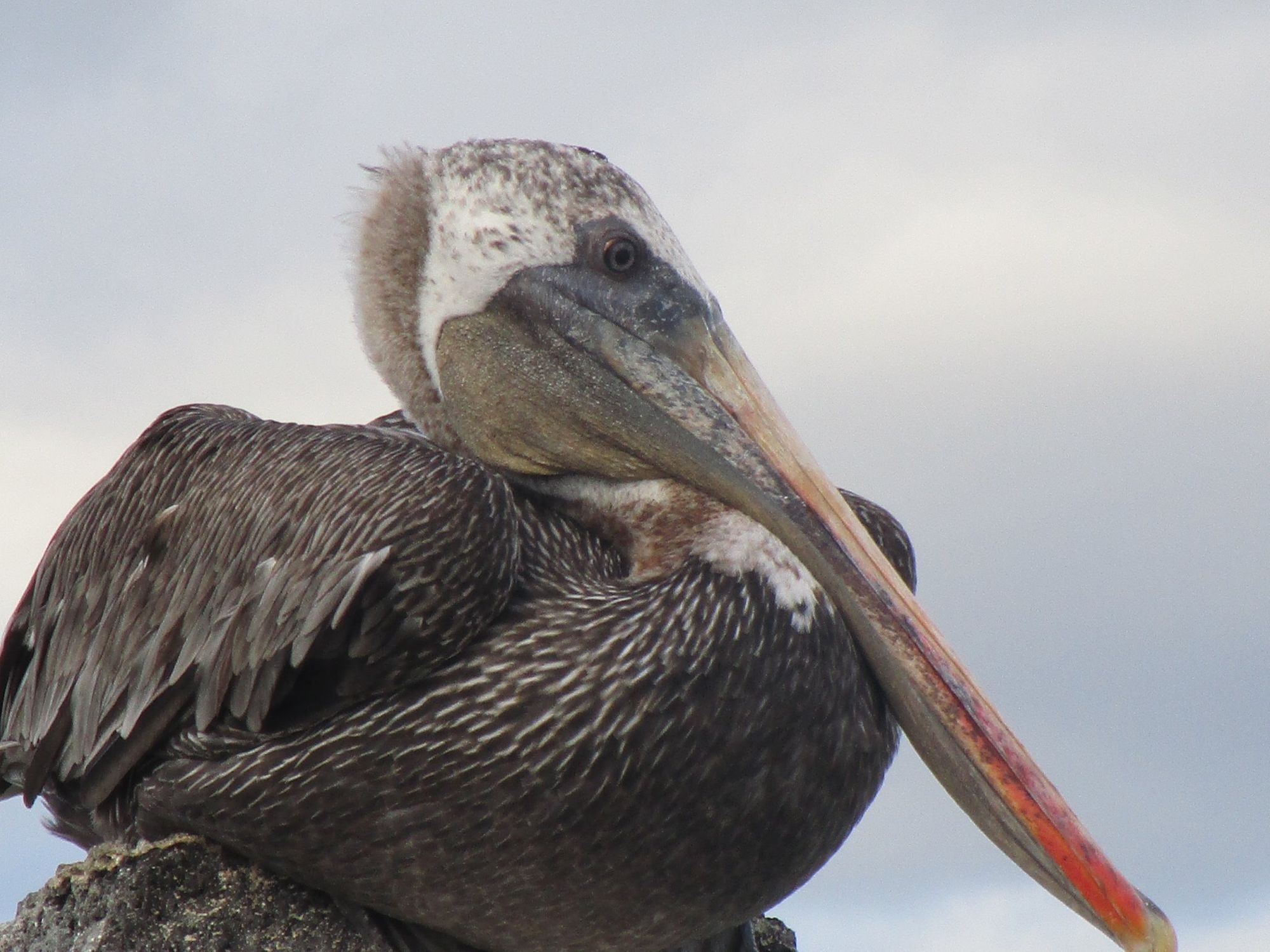
We returned to Isabela the next morning, landing at a place called Caleta Tagus and hiking up a rocky trail through a dry, dead-looking forest. In the rainy season this landscape is leafy and green, something that was difficult to imagine as we strained to see the slightest sign of life amongst the thorny trees and bushes. There was no sign of the island's more colourful fauna, but we did spy several of the famous Darwin's finches.
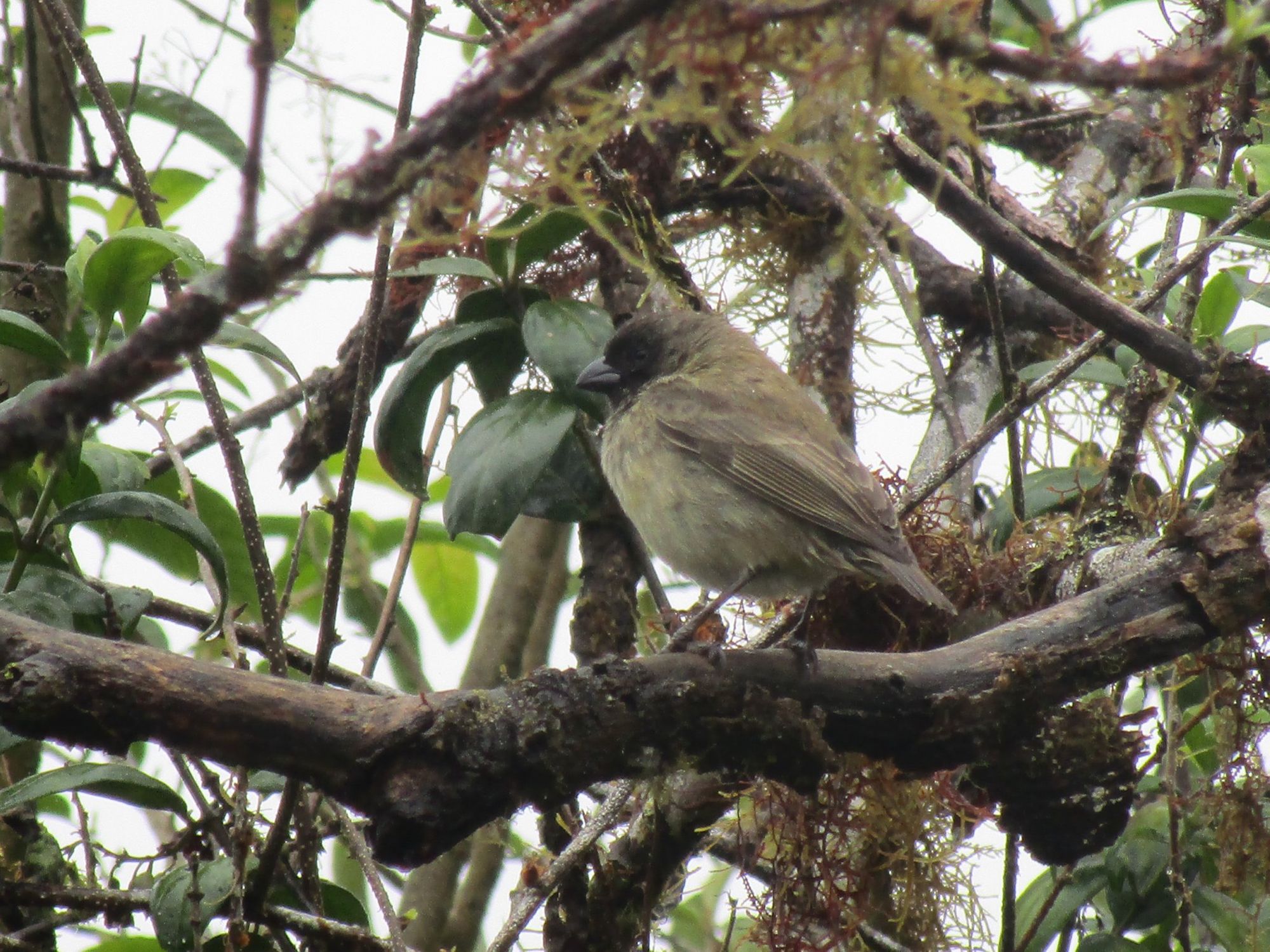
There are 15 different species of finch in the Galapagos, with a range of different beak shapes and sizes. To the untrained eye they look pretty unremarkable, but in fact the finches provide one of the most compelling examples of evolution and natural selection at work. Because the Galapagos islands were created by volcanic activity way out in the Pacific Ocean, they have never been connected to the South American mainland, so each endemic species is descended from an ancestor that arrived here from elsewhere, including the finches.
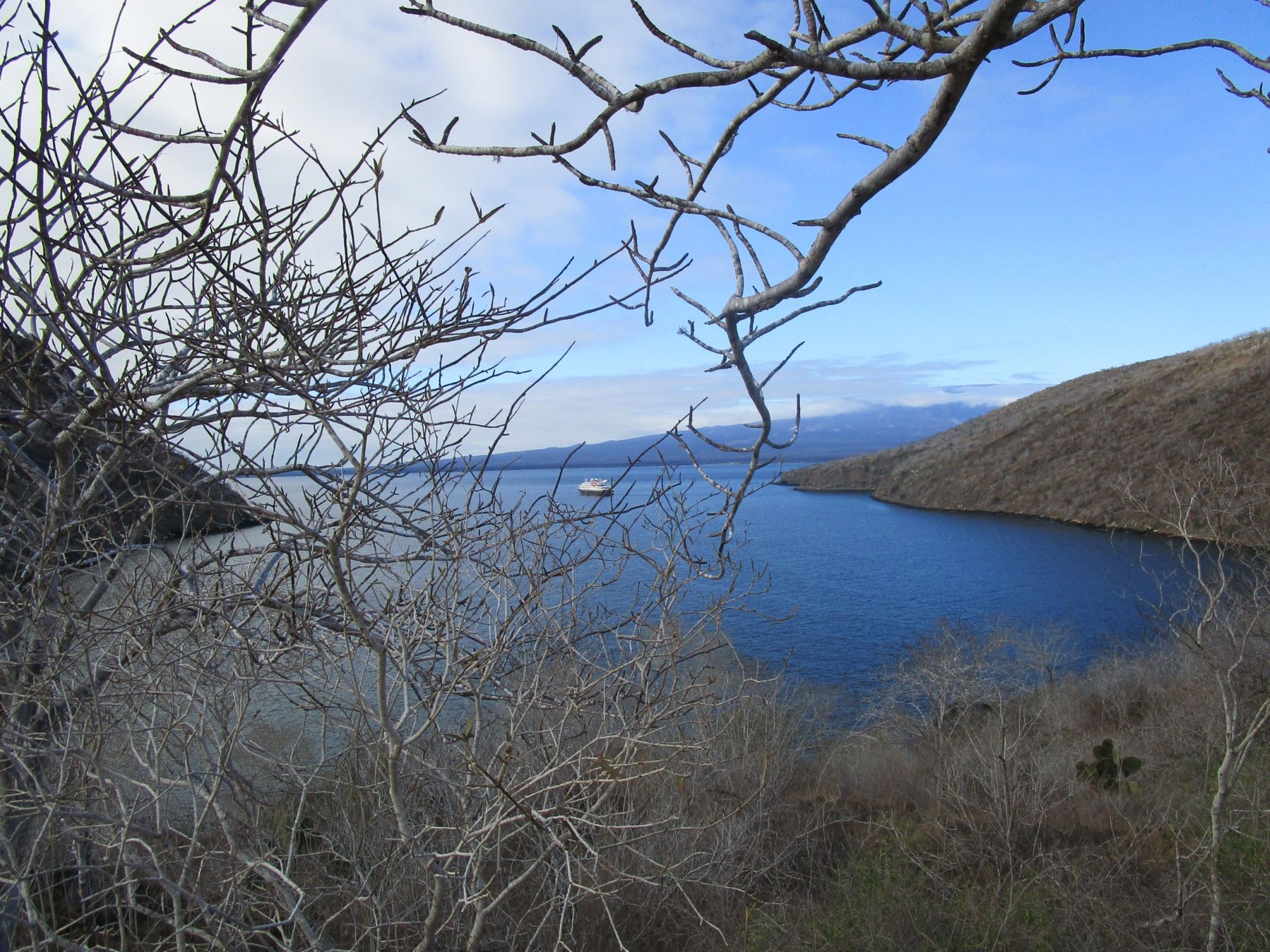
The provenance of certain species is obvious: sea lions and turtles simply swam here, while seabirds with a long range, such as boobies and albatross, would have flown here. But land-based species such as iguanas and tortoises, and smaller birds such as finches, would have arrived here by chance, clinging onto logs or rafts of vegetation, washed out to sea by storms and tsunamis.
The finches arrived in an ecosystem where virtually all the species of bird found in their mainland home were missing, and over millennia they have evolved to fill the niches that would normally have been occupied by other birds. There are finches adapted to feeding on the insects found in mangroves; finches that specialise in eating crunchy seeds; and the remarkable woodpecker finch, which uses its strong beak to break into trees, then fishes out insects by using twigs or cactus spines as primitive tools.
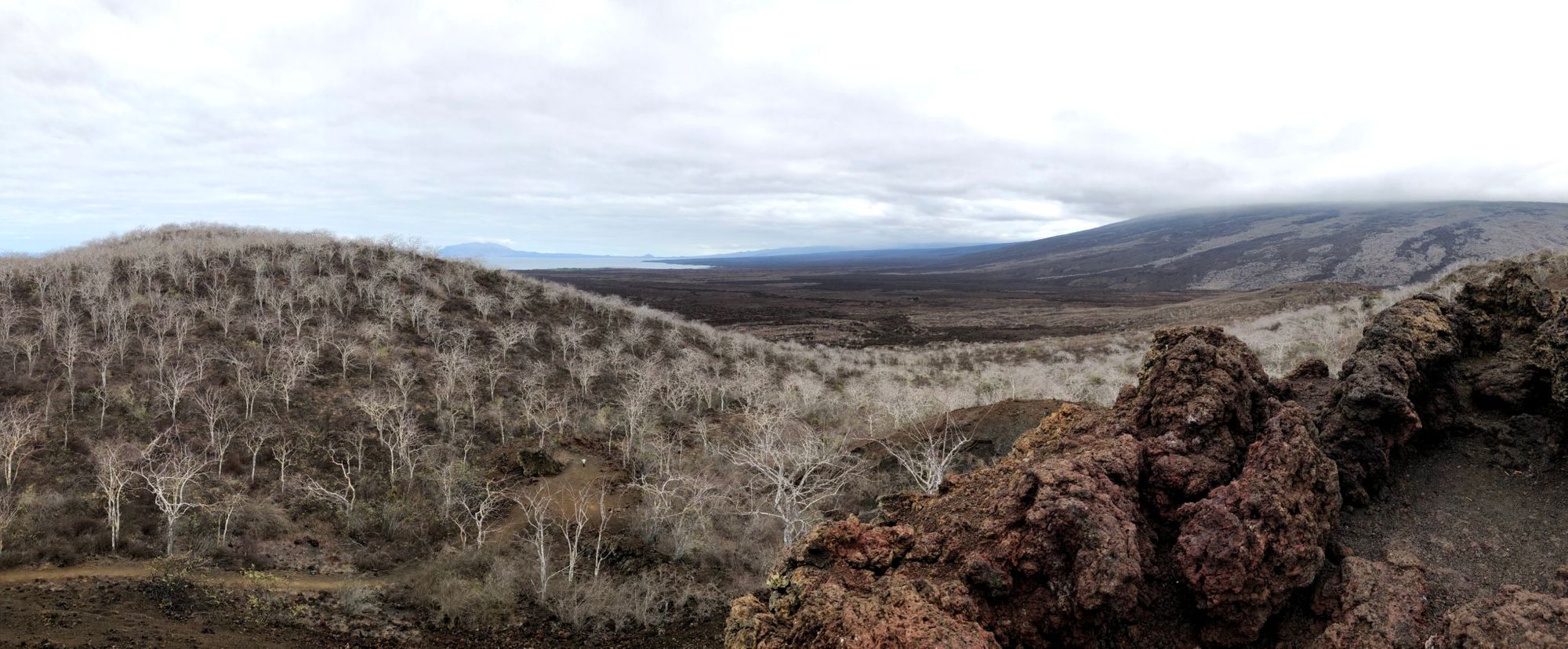
Evidence of evolution is all around you in the Galapagos. From the top of the hill at Caleta Tagus we could see Isabela's chain of six shield volcanoes stretching into the distance, and we learnt that the different volcanoes are each home to a different sub-species of tortoise, cut off from each other by inhospitable and barren lava fields.
In the afternoon we took a zodiac cruise into the mangroves at Elizabeth Bay, an extraordinarily rich ecosystem where we saw rocks covered in blue-footed boobies, flightless cormorants, sea lions and crabs. As we headed deeper into the mangrove we passed a rocky outcrop where a group of penguins dived, one by one, into the water. Pelicans soared overhead looking for fish, sea turtles occasionally popped their heads up out of the water, and a lone Galapagos hawk sat at the top of a tree surveying the scene.
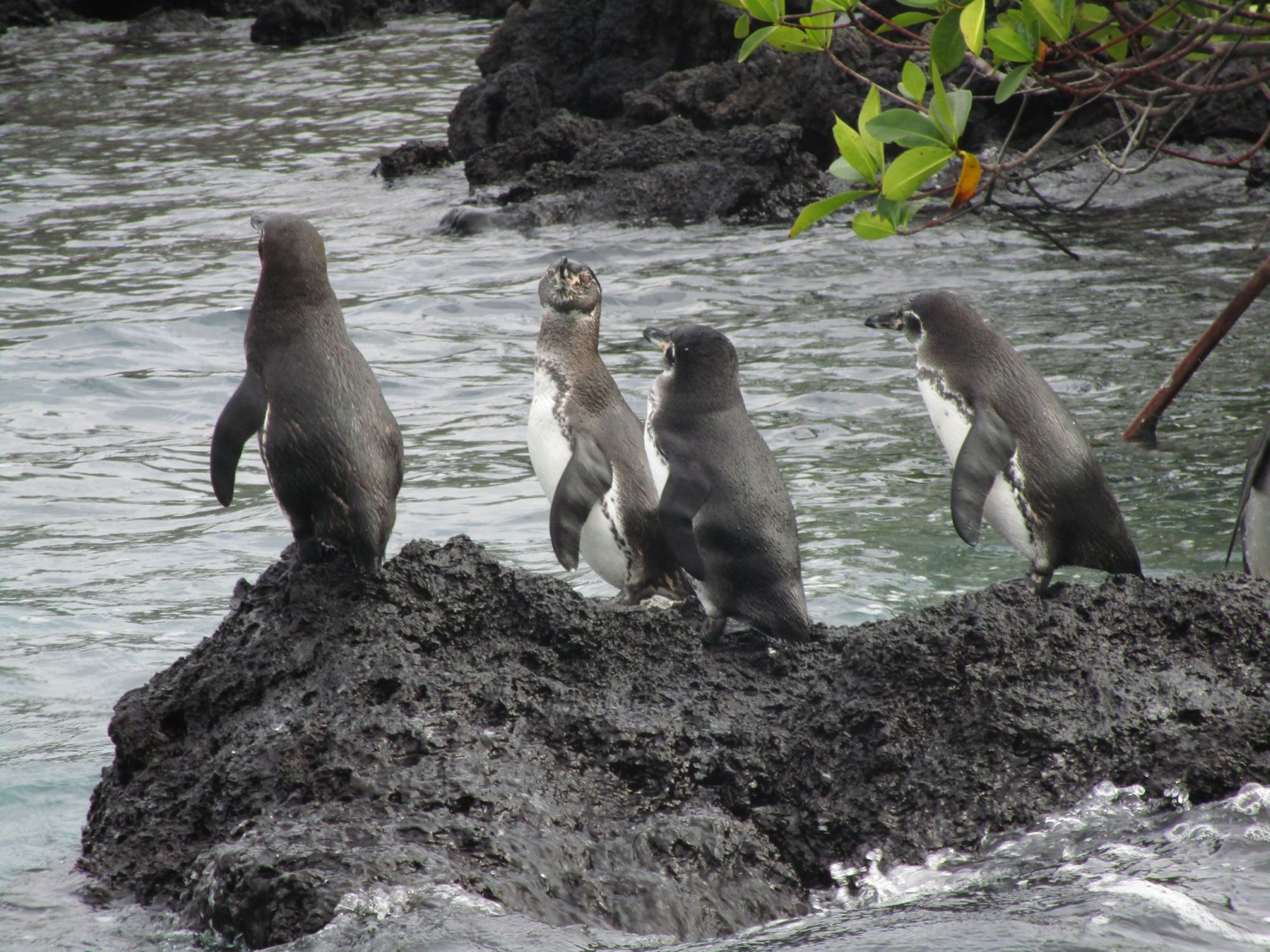
Fernandina
Fernandina is the youngest of all the Galapagos islands, and our landing site at Punta Espinoza was caked in a thick crust of black lava. We could still see the wrinkles and rucks where the molten rock had cooled and solidified mid-flow; the most recent eruption on Fernandina happened just a few months prior to our visit.
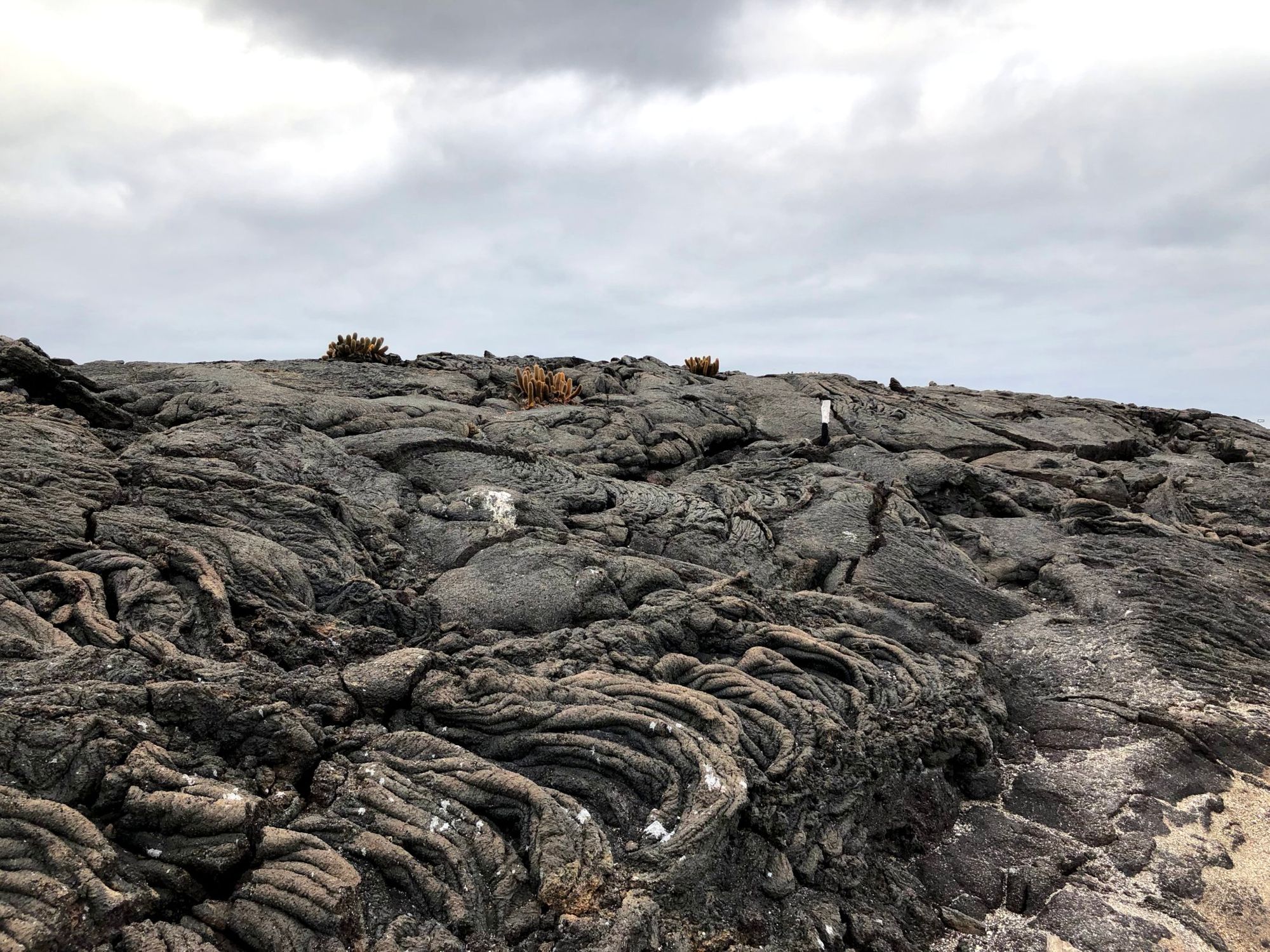
The main reason for visiting Fernandina isn't the geology, however. At first we didn't spot the island's most famous residents, camouflaged as they were against the black surface of the lava. It was only when we saw some of the rocks start to move that we realised we were actually looking at a group of marine iguanas, dozens of them all slumped on top of each other like drunks. Being cold-blooded, the iguanas spend a lot of time basking in the sun, and huddling together creates more warmth.
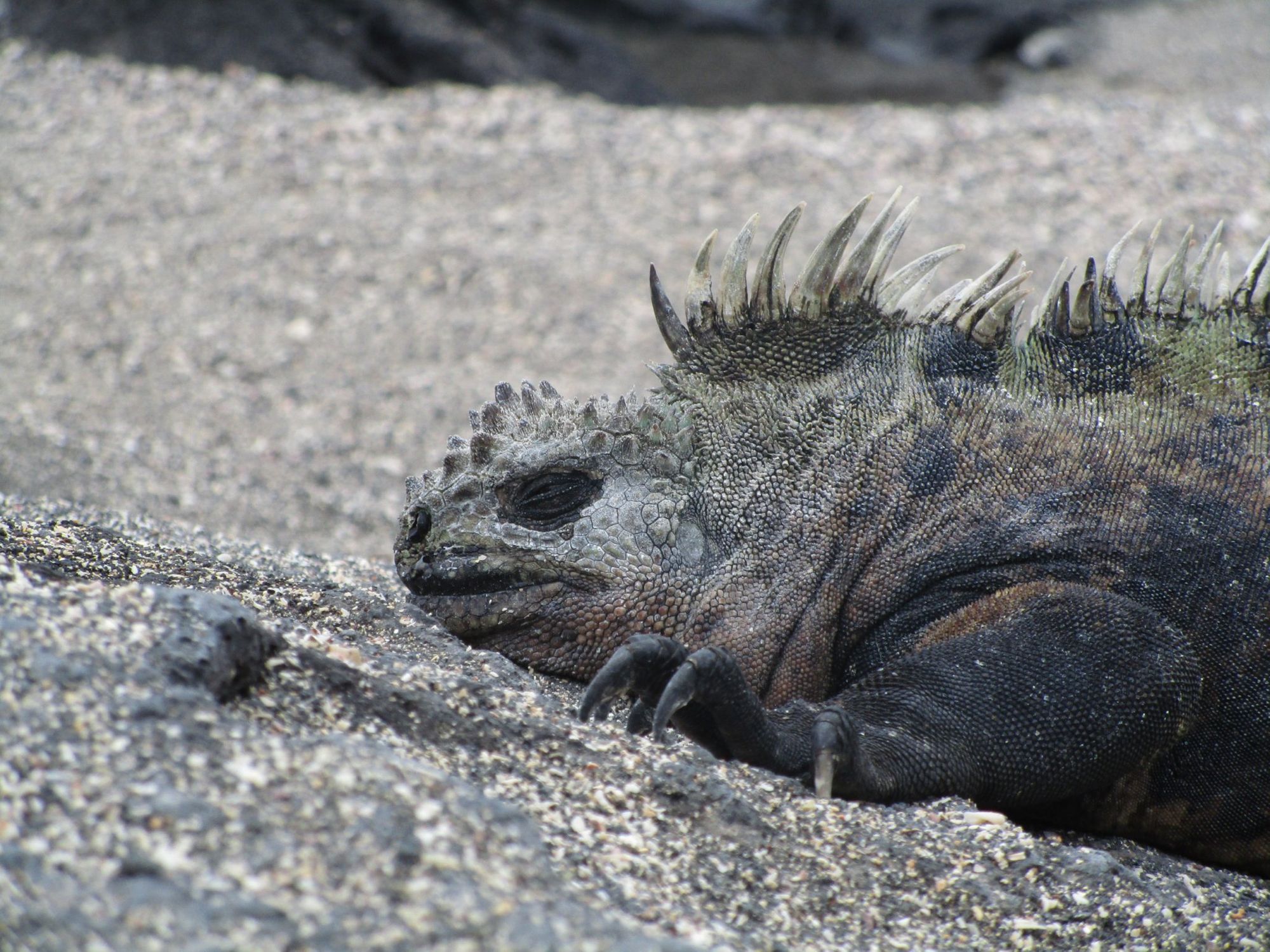
Galapagos marine iguanas are the only lizards on earth that swim in the sea, feeding on algae, and they have a very unusual adaptation that helps them deal with the salt in the water. Every couple of minutes we would hear a sound like a little iguana sneeze, as one of these peculiar lizards blew salt out of its nose. The iguanas are able to filter the salt out of their blood, and excrete it from special glands in their nostrils. They also have a flatter snout than other iguana species, which helps them to get closer to the rocks where the algae grows.
The iguanas were not alone on Fernandina, with sea lions lazing around, bright red Sally Lightfoot crabs creeping across the rocks, and flightless cormorants fishing around the coast. In one of the more comical episodes of our trip, we watched a sea lion waddle straight across a big group of dozing iguanas, sending the startled lizards darting for cover.
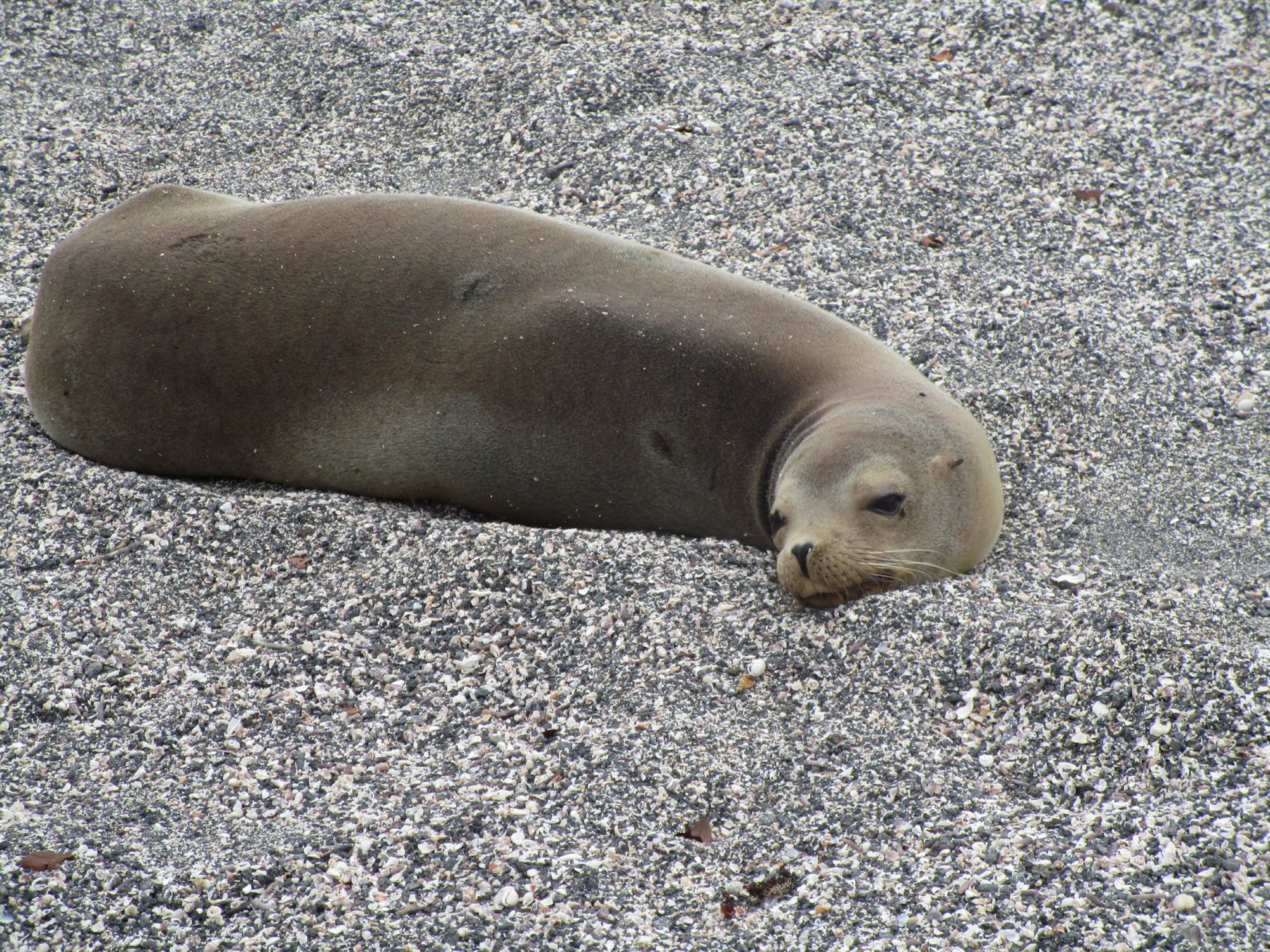
Floreana
We enjoyed some more spectacular snorkelling at Floreana island, swimming with sea turtles just off the beach at Post Office Bay. Later that same day we went snorkelling again around Champion Islet, where we saw a huge 'bait ball' of silvery fish, thousands of them, like something from Blue Planet.
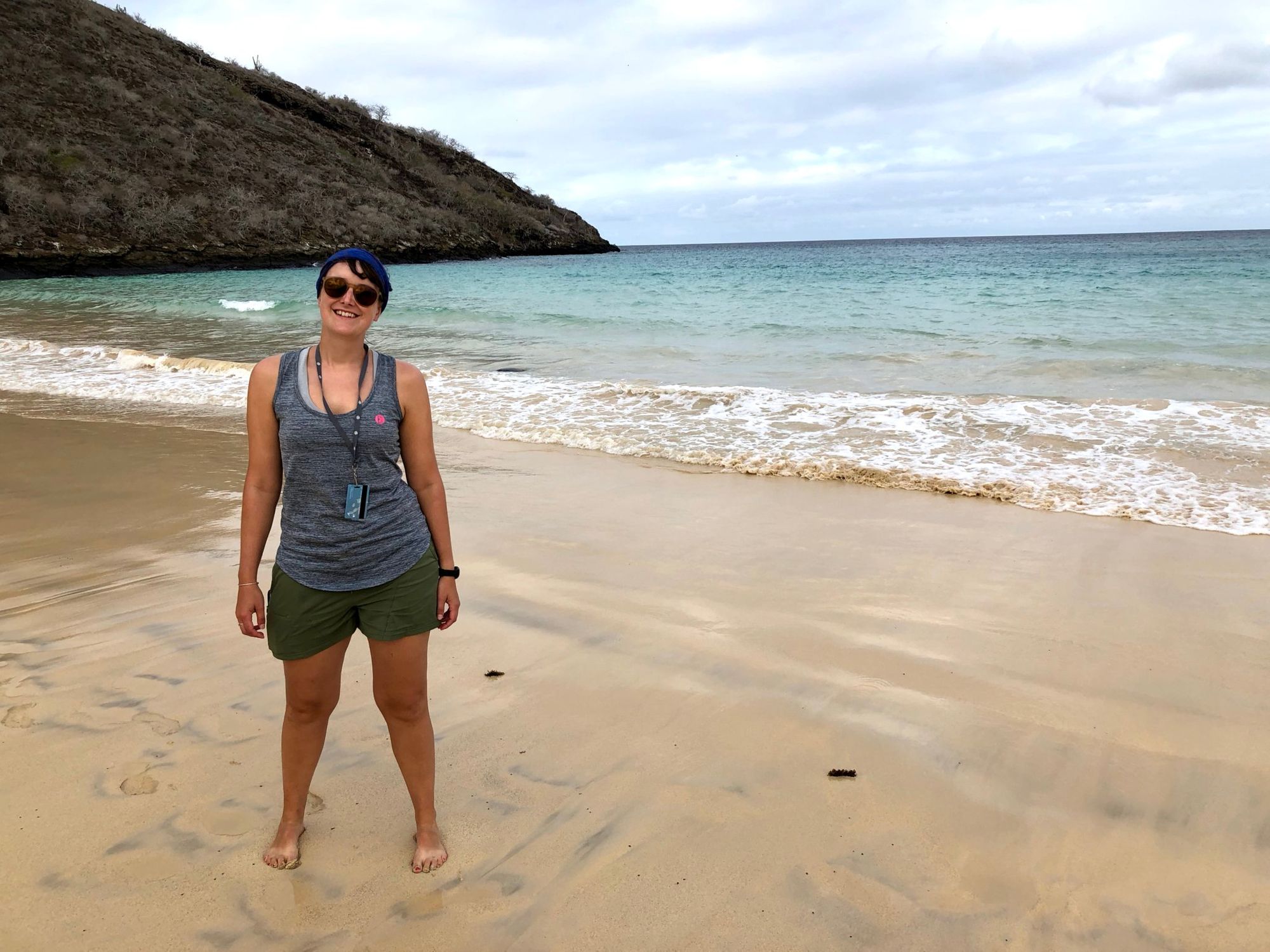
At Punta Cormorant we walked along an amazingly soft white sand beach, where we saw turtles in the shallows attempting to mate, and stingrays feeding on little crustaceans near the water's edge. Just inland from the beach we stopped at a salty lagoon full of American flamingos, the fourth different species of flamingo that we'd seen in South America.
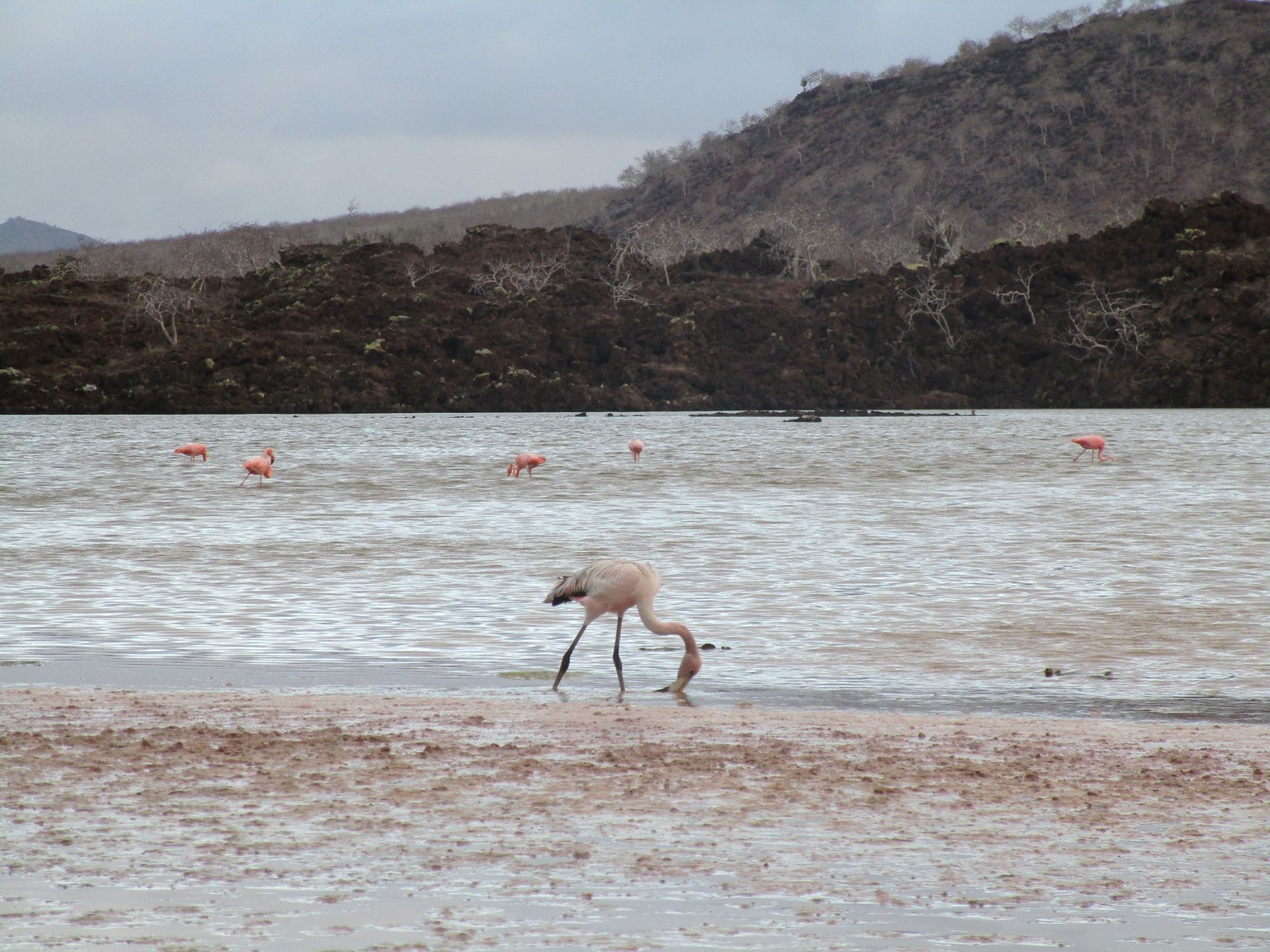
The adults were an incredibly vivid pink thanks to the algae and brine shrimp that they feed on, while the juveniles were still mostly grey in colour. We also saw little yellow warblers, flycatchers, herons and a blue-footed booby feeding its chick.
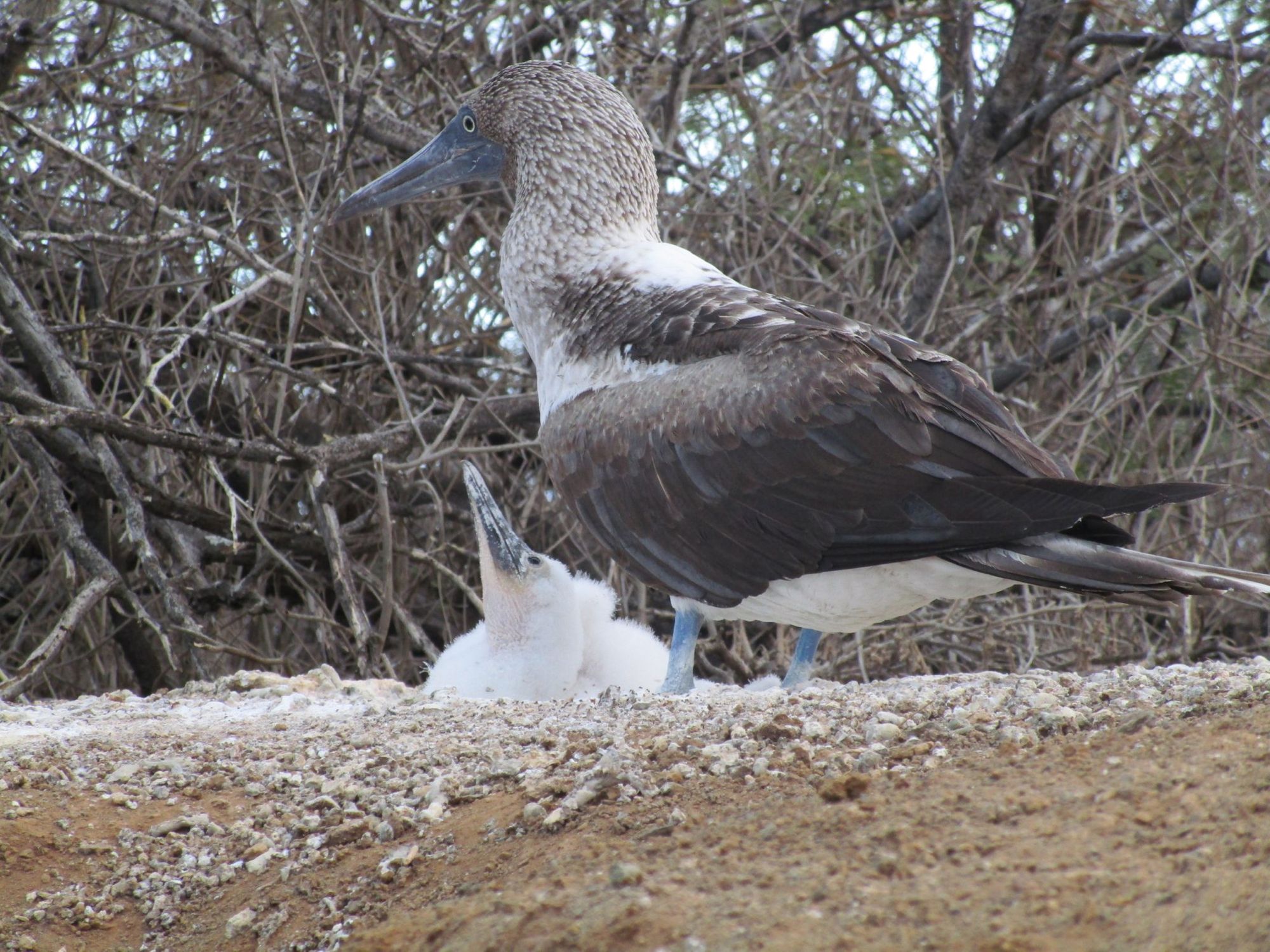
Santa Cruz
Our final destination was the island of Santa Cruz, home to two of the archipelago's biggest land-based species. Santa Cruz is older than Isabela and Fernandina, with a very different landscape, and the volcanoes that formed the island are now extinct.
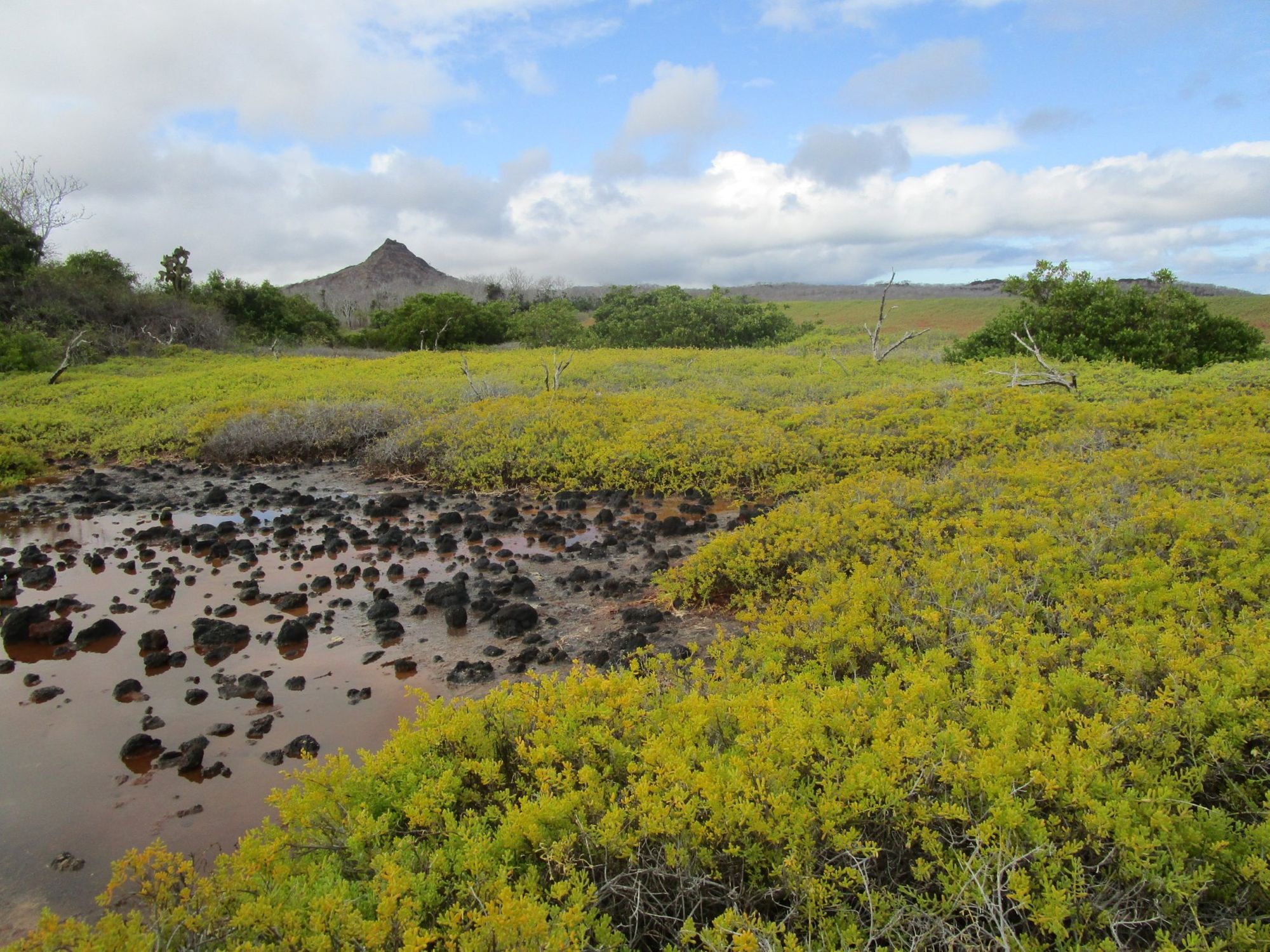
At our first landing site we made our way through a surreal, humid cactus forest, passing a salty lagoon where biting flies buzzed around our ankles. Ahead of us was a low hill called Cerro Dragón, and we soon spotted one of the 'dragons' from which the hill takes its name: a yellow land iguana.
These iguanas are larger than their marine cousins, and their main food source is the cacti. The iguanas and the cacti are engaged in something of an evolutionary arms race; over time, the cacti have evolved sharp spines at their base to stop the iguanas climbing them, so now the iguanas simply sit and wait for bits of cactus to fall off naturally.
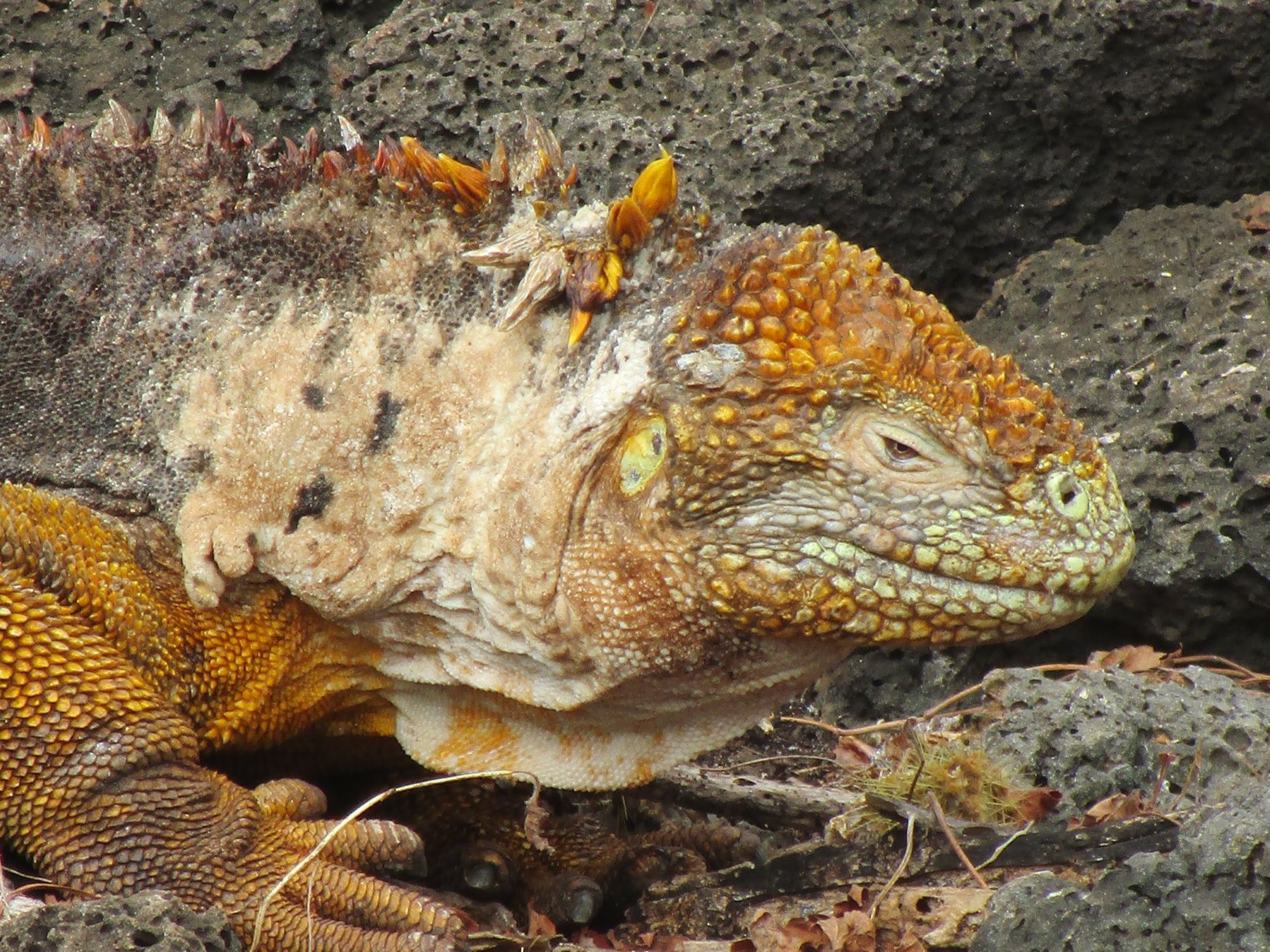
The healthy iguana population at Cerro Dragón is an example of a successful and ongoing conservation project. Santa Cruz is one of the few islands with human inhabitants, and iguana numbers were hit hard by the introduction of domestic animals such as cats, goats and dogs. In the 1970s some of the iguanas were moved to a nearby island, where they were able to breed without the threat of dogs digging up their nests, and they were later reintroduced to Santa Cruz.
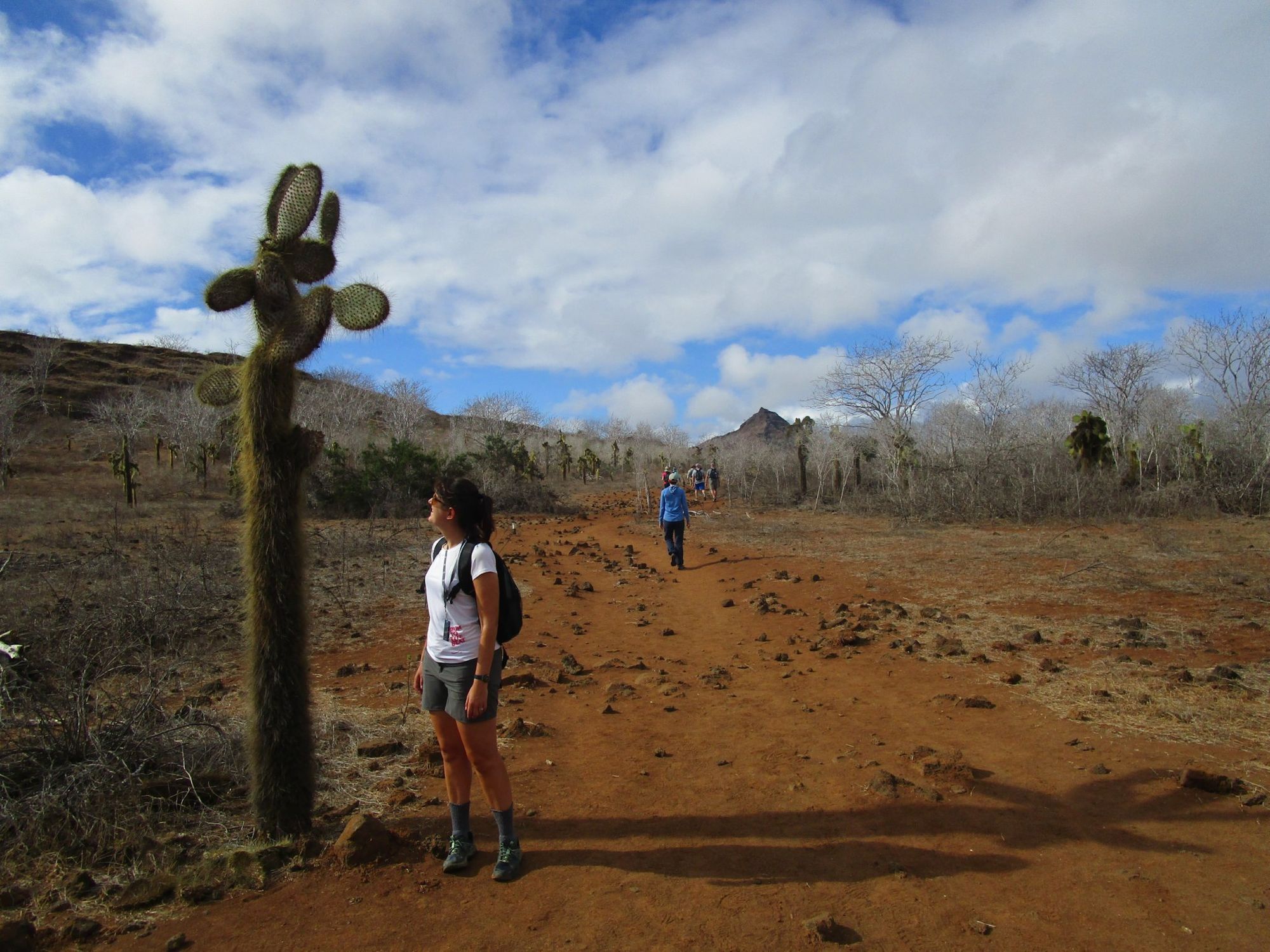
On our final day in the Galapagos we headed up into the green and fertile highlands, where cows grazed in muddy fields and rain fell intermittently in a fine drizzle. This part of Santa Cruz is home to the El Chato Giant Tortoise Reserve, one of the few places in the Galapagos where it's possible for tourists to see giant tortoises in the wild. As our minibus bounced down the road to the reserve we started spotting them everywhere, their domed shells rising out of the grass in the fields on either side of us.
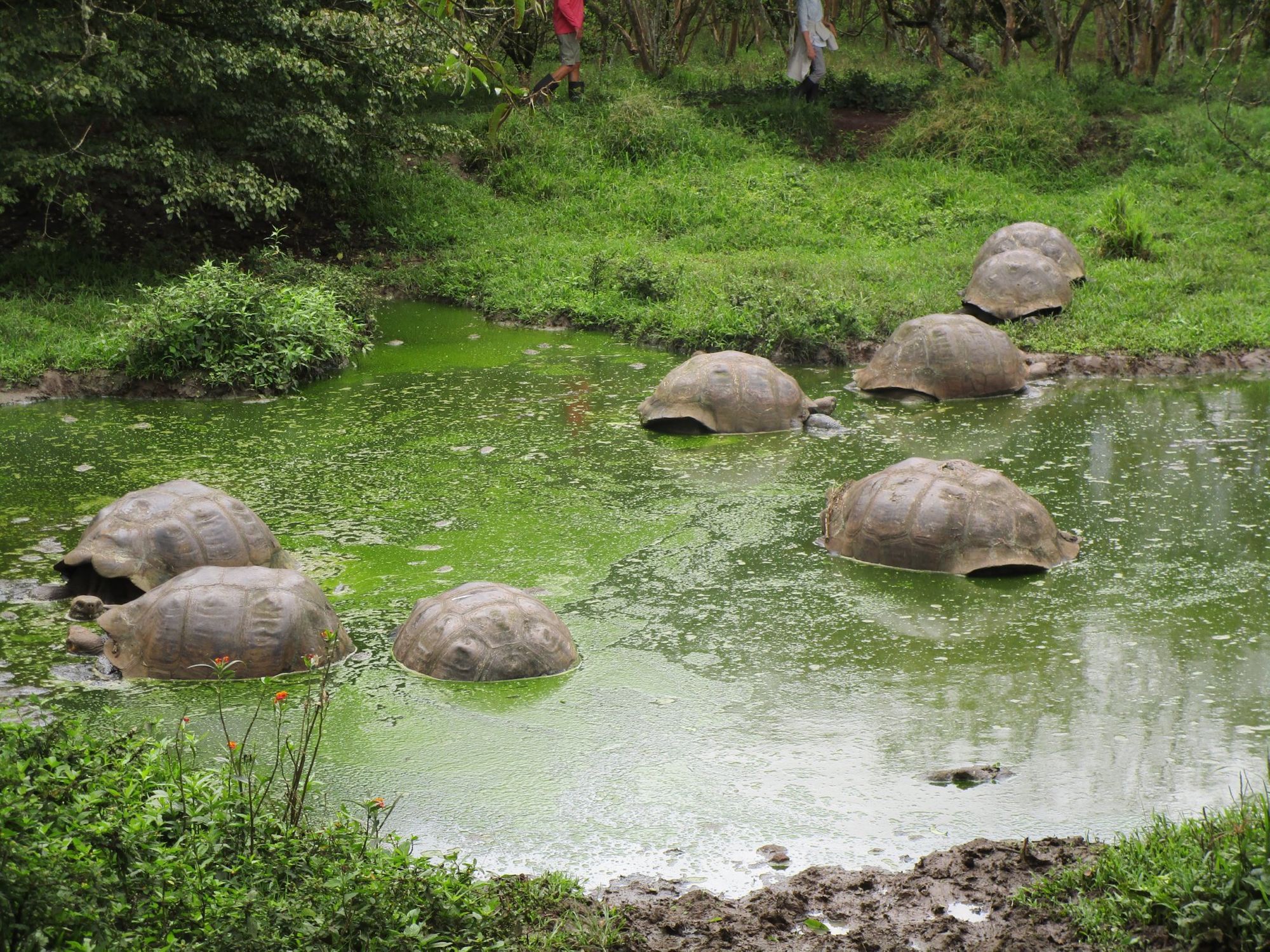
After donning wellies we took a walk around the reserve with our guide, and we got a closer look at these lumbering, prehistoric-looking beasts. Several of them were bathing in a muddy pond, or the 'tortoise Jacuzzi' as our guide called it.
A lot of the time in the Galapagos we felt like we were seeing the world as it might have been had humans never come along. Human settlement of the islands only really began in the 1920s, but sadly our species has still had a huge impact on the islands, and the giant tortoise population declined from over 250,000 in the 16th century to a low of just 3,000 in the 1970s. Sailors on long sea voyages used to stop at the Galapagos and stock up on tortoises to eat, since they were an excellent source of protein. Even Charles Darwin's ship, the HMS Beagle, collected some 30 tortoises from the islands, and they had all been eaten by the time the ship arrived back in England.
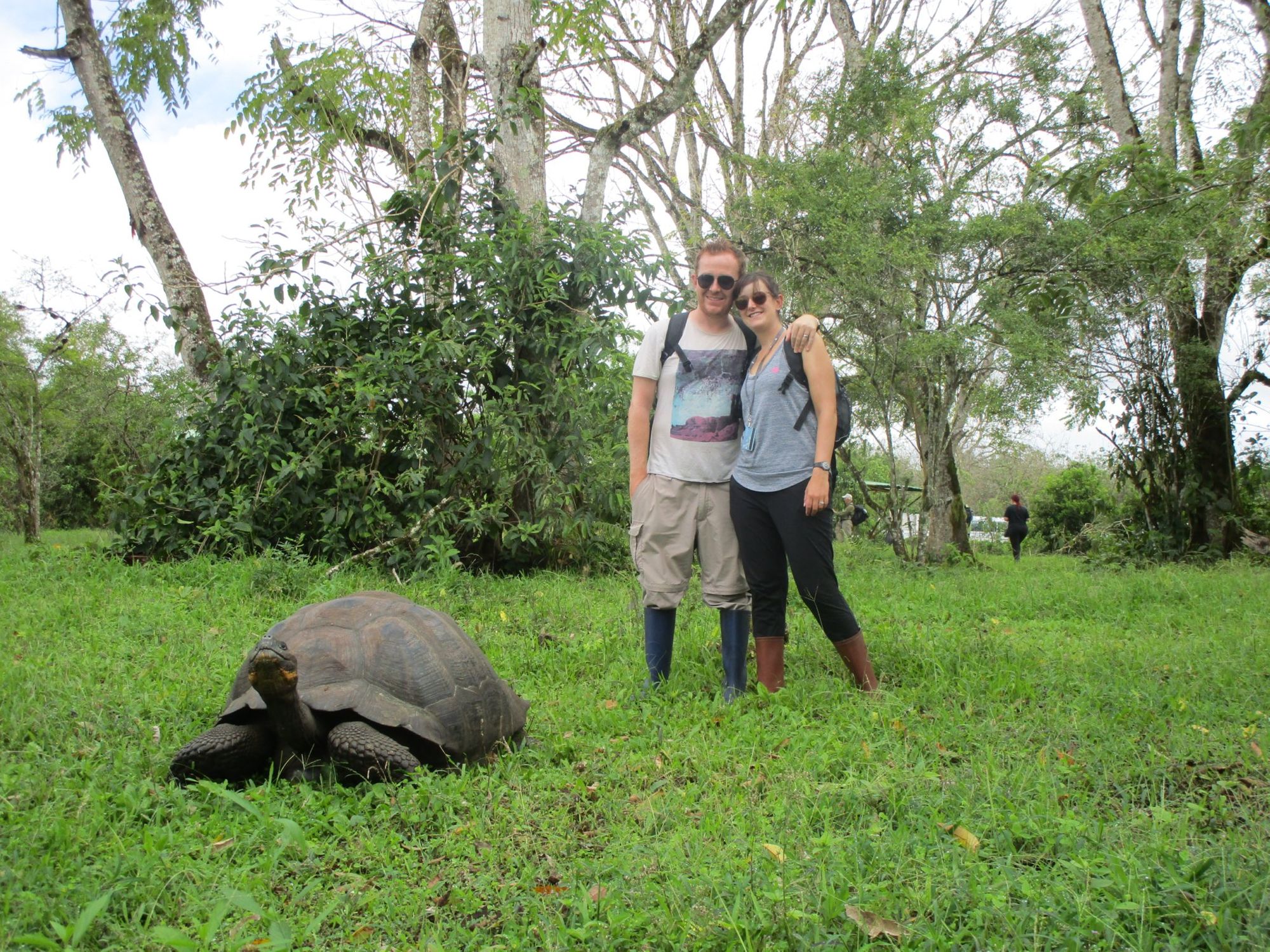
The plight of the tortoises was epitomised by the archipelago's most famous resident, a giant tortoise known as Lonesome George. Born around 1910, George was the last surviving member of his species, the Pinta Island tortoise. Sadly George passed away in 2012, and his species died with him. George's taxidermied body is now on display at the Charles Darwin Research Station in Puerto Ayora, on the south coast of Santa Cruz.
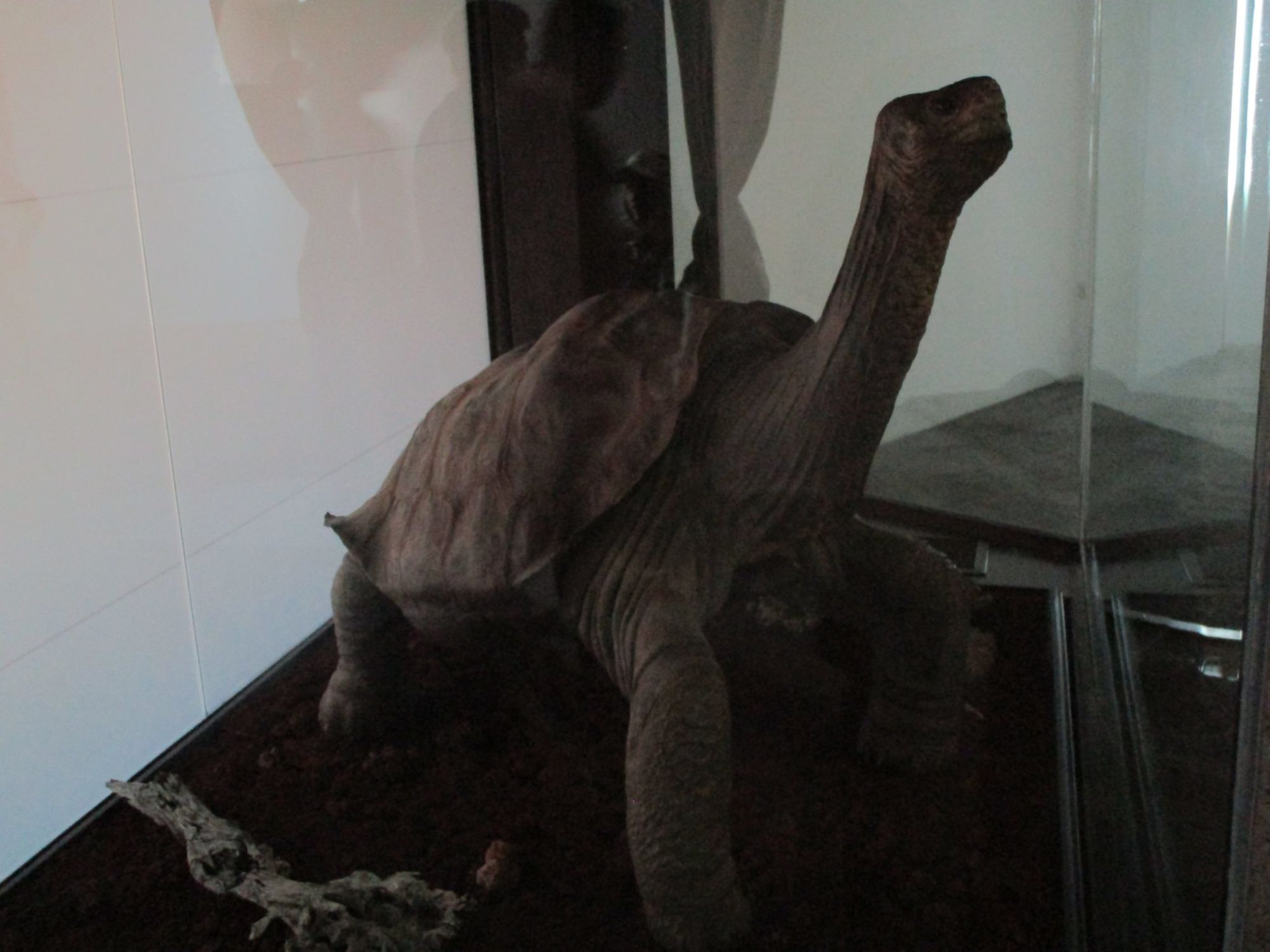
To see George we had to first wait for a couple of minutes in a sort of airlock, to preserve the delicate atmospheric conditions in which he is kept. We then filed into the dimly lit room to see him in his glass case, a peculiar but poignant reminder of the fragility of the Galapagos. It was also a reminder, if one was needed, of how privileged we were to visit these remarkable islands.

